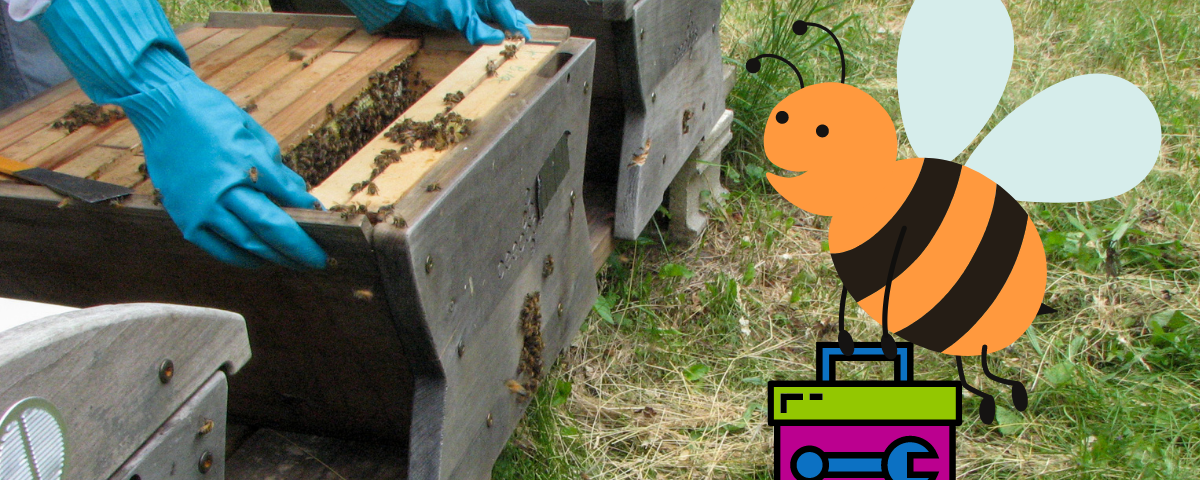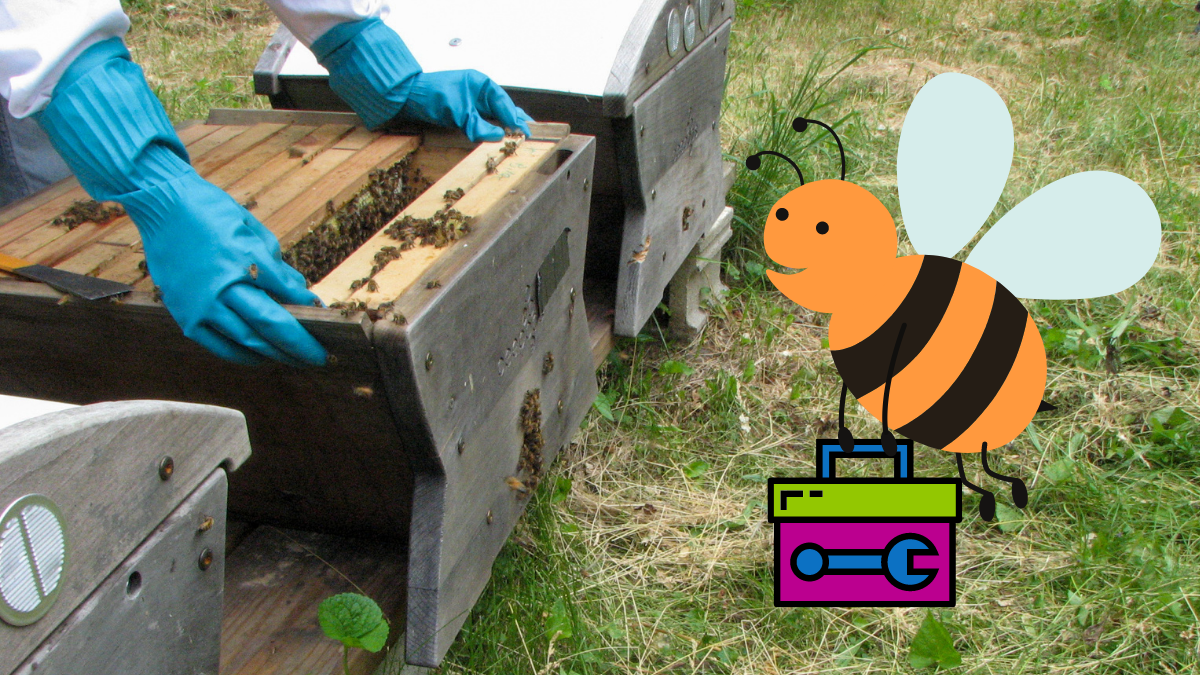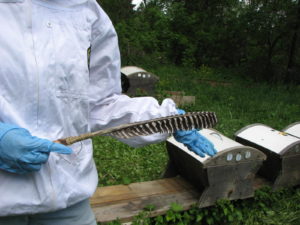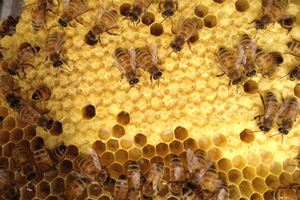- All-In-One Beekeeping for the Bees
- +1-608-728-8233
- info@beepods.com
How the Right Beekeeping Equipment Makes Inspections Better for Beekeepers and Bees

 Using the right tools can make any task more manageable and productive. Imagine placing a nail without a hammer or scraping cake batter out of a bowl without a spatula. Sure, you can get the job done, but it’s a lot easier when you have the right equipment.
Using the right tools can make any task more manageable and productive. Imagine placing a nail without a hammer or scraping cake batter out of a bowl without a spatula. Sure, you can get the job done, but it’s a lot easier when you have the right equipment.
Working with your bees and inspecting your hive is no different. You can ultimately carry out the task with standard beekeeping tools, but your work will be more productive if you have access to the right tools.Today, we’re sharing how using the right beekeeping equipment makes inspections better for beekeepers and bees.
Be Gentle With Your Bees
At Beepods, we’re committed to beekeeping for the bees. So, when you’re planning a hive inspection, your bees’ safety should be a top priority.
While it’s a commonly-used tool for moving bees out of your way and avoiding stinging, we don’t support using smokers. They add an unnecessary substance to the hive that bees are left to clean off their home and themselves. Using smokers isn’t the approach for moving your bees that’s best for your bees or you. Beekeepers who use smokers inhale the smoke themselves, after all.
Brushes are also a popular tool for relocating bees while you work at your hive. Most times though, beekeepers discover that the tool and technique will not cause the desired result. Instead, the bees will either be killed by squishing or legs being left in place while the body is popped away. Or, the bees will become extremely agitated because the pressure of the brush will push the bees off in clumps, meaning they couldn’t survive the fall to the ground.

A beekeeper uses a Feather Guider to help them work around the hive.
Instead, we recommend using a gentler and more bee-friendly tool for moving bees—our Beepods Feather Guider. With the Feather Guider, there are several ways you can encourage your bees to buzz off from the area you’re working without aggravating them.
Using the Feather Guider, beekeepers easily sweep/scoop bees off their feet or herd them to a specific spot. You can also use the Feather Guider to encourage your bees to take flight, though, since bees aren’t huge fans of this method, we use it sparingly. Beekeepers are able to efficiently get their work done at the hive during inspections, without harming your bees, with a feather guider in your toolkit!
Use the Right Tool for Your Hive
A Traditional Hive Tool is excellent for scraping and prying propolis and comb within the hive during inspections. But if you have a Beepod or cathedral hive, a prepared beekeeper should also have a Beepods Hive Tool in their arsenal! The Beepods Hive Tool was designed to help beekeepers efficiently work in their hive and carefully manage hive components to support their bees’ health and productivity.
 The Beepods Hive Tool is intended to fit between pieces of comb and break up wax and propolis attachments in your hive. It can detach bars from walls with wax, from the cradle with propolis, or from each other along the top of vented top bar hives.
The Beepods Hive Tool is intended to fit between pieces of comb and break up wax and propolis attachments in your hive. It can detach bars from walls with wax, from the cradle with propolis, or from each other along the top of vented top bar hives.
Instead of maneuvering and manipulating other tools to accomplish your task at hand, using the Beepods Hive Tool is a piece of equipment created specifically to fit and work within your hive.
Make Working with Comb Easier on Yourself
When you’re working at your hive by yourself, lifting a heavy bar of comb to inspect and make repairs is pretty tricky. Holding bars and working with tools is challenging with just two hands!
If you have a Beepod, a Beepods Top Bar Hive-side Inspection Stand is ideal for safely working on and inspecting comb. Use it to position a bar to examine comb safely from all angles, or so you can use your hands to make repairs or fixes. With a hive bar positioned in the Hive-Side Inspection Stand, you can more easily observe and record data about honey production, brood health, and other vital hive developments.

Beekeepers using the tabletop stand to view and repair comb.
When you use a hive stand during inspections, you save time, make repairs easier for yourself, and have access to better views of what your bees are up to!
Conclusion
The time you spend carrying out inspections and working around the hive should be as efficient, productive, and kind to your bees as possible. While there are various tools available for today’s beekeepers, using the right equipment allows you to make the most of inspections and simplify your work. As you prepare for spring beekeeping, make sure you have the best tools for you and your bees ready to go!
Kanoe Riedel
Latest posts by Kanoe Riedel (see all)
- This Spring, Don’t Forget Why Bees Are So Important to Our Environment - March 26, 2021
- 11 Awesome Uses for Your Stored Honeycomb - March 2, 2021
- How the Right Beekeeping Equipment Makes Inspections Better for Beekeepers and Bees - February 12, 2021



